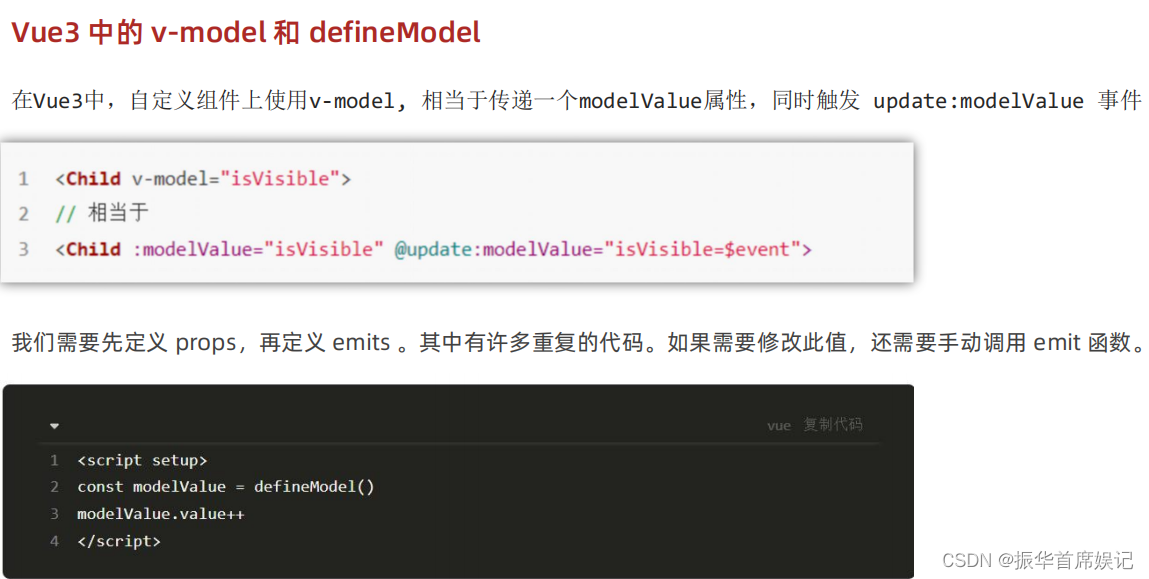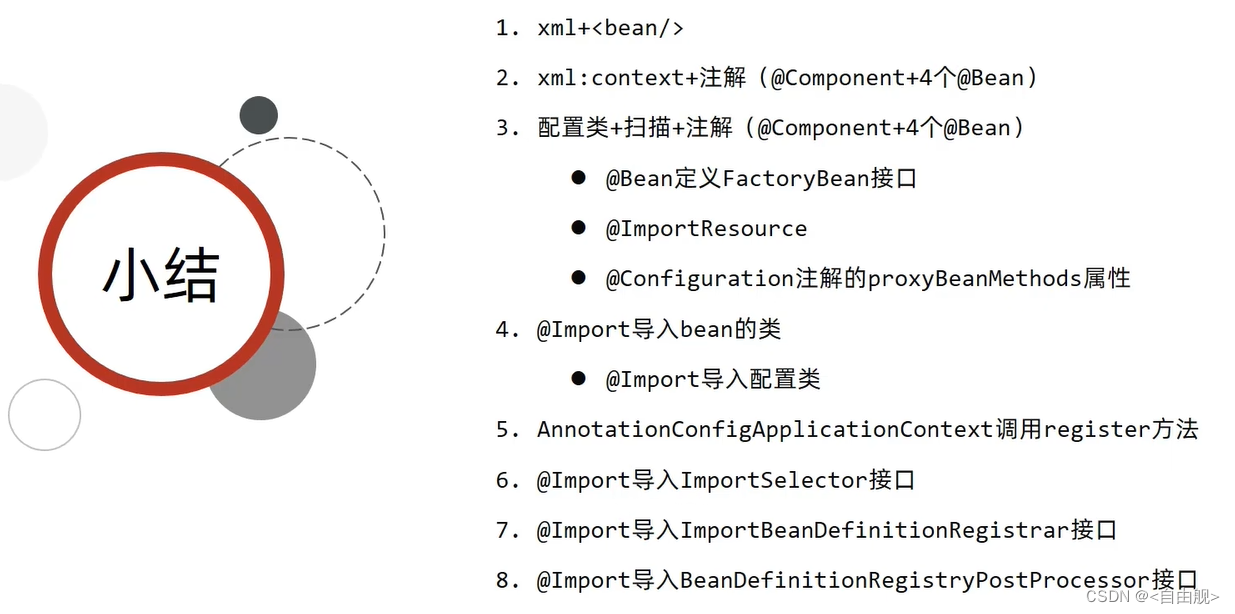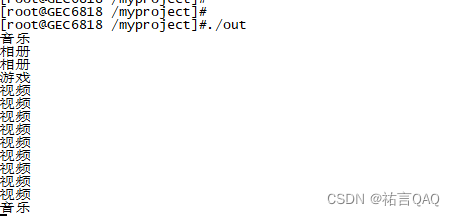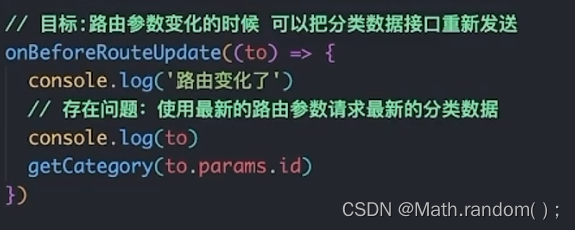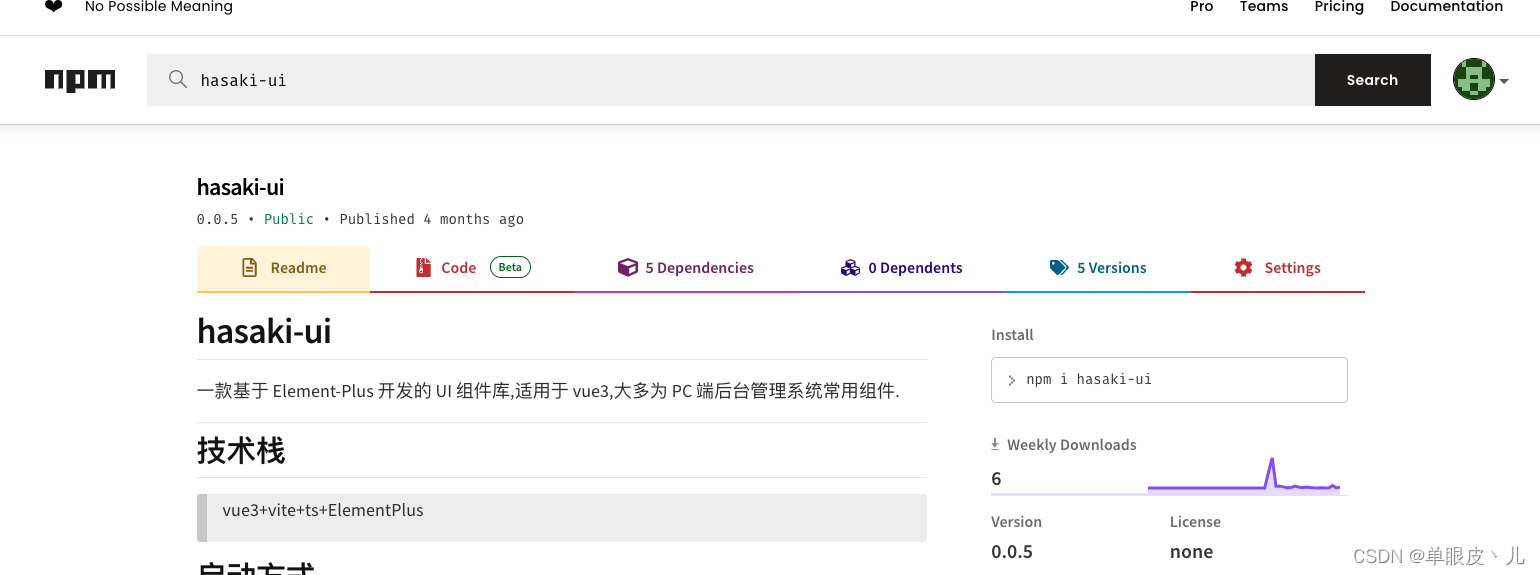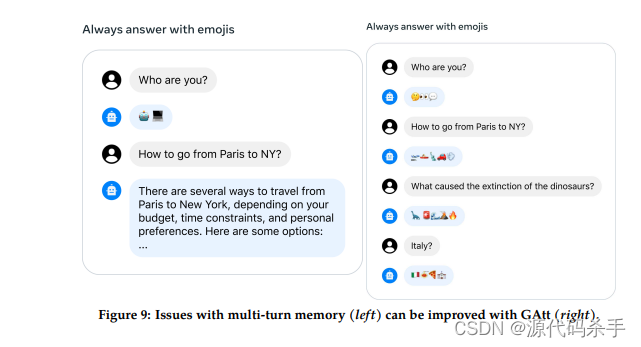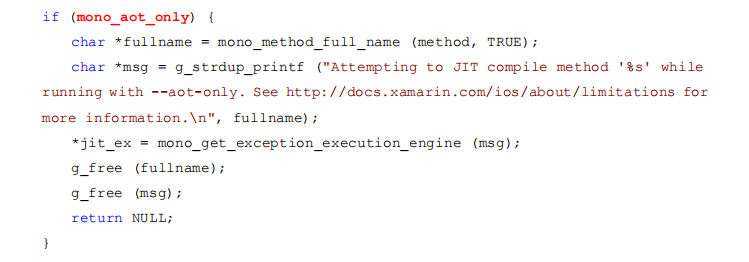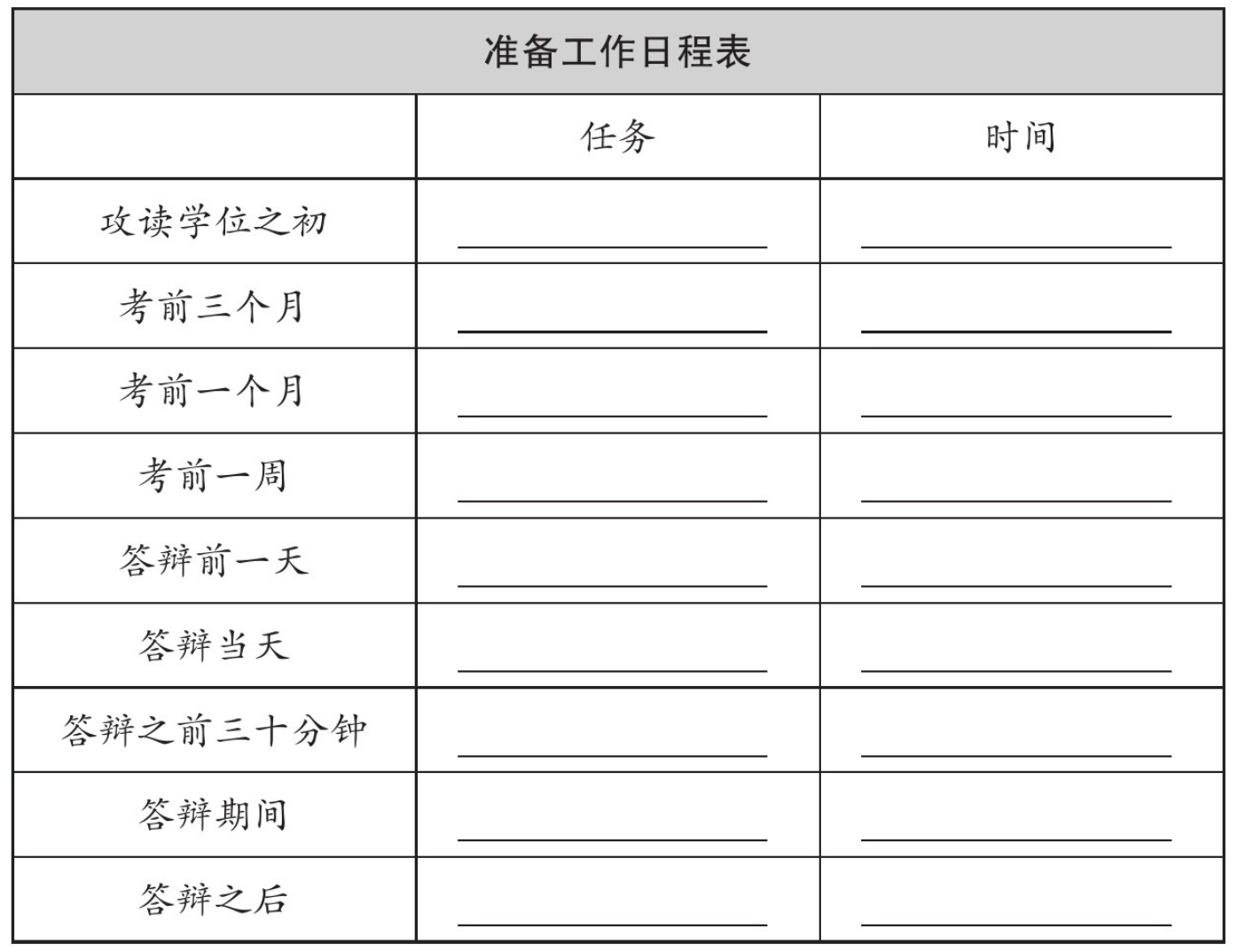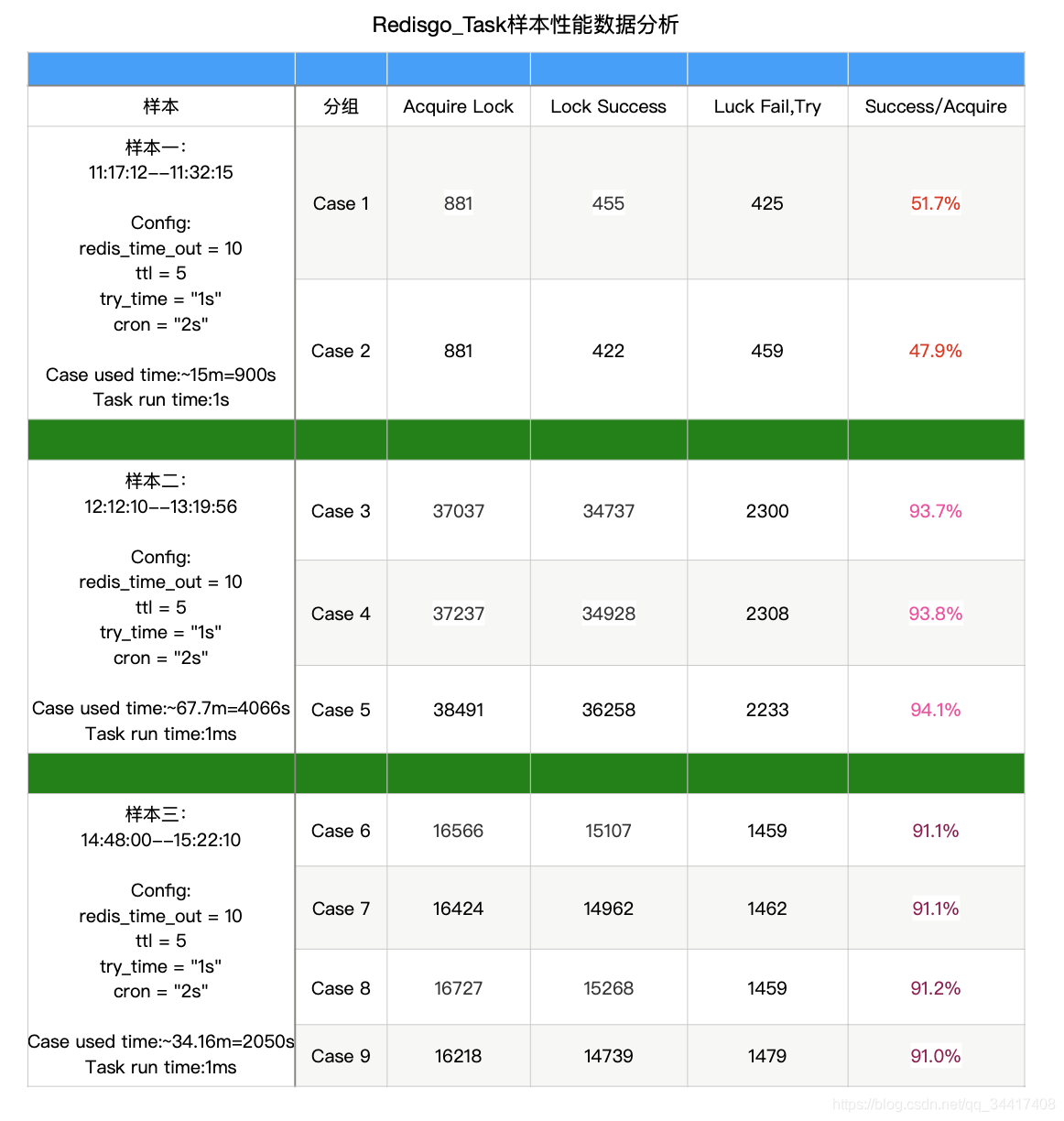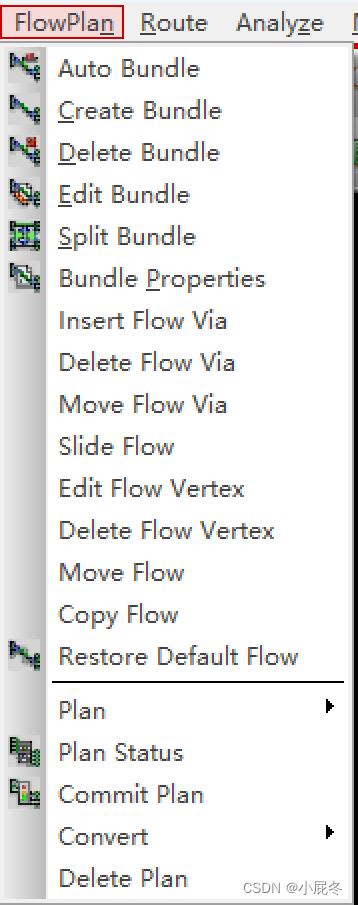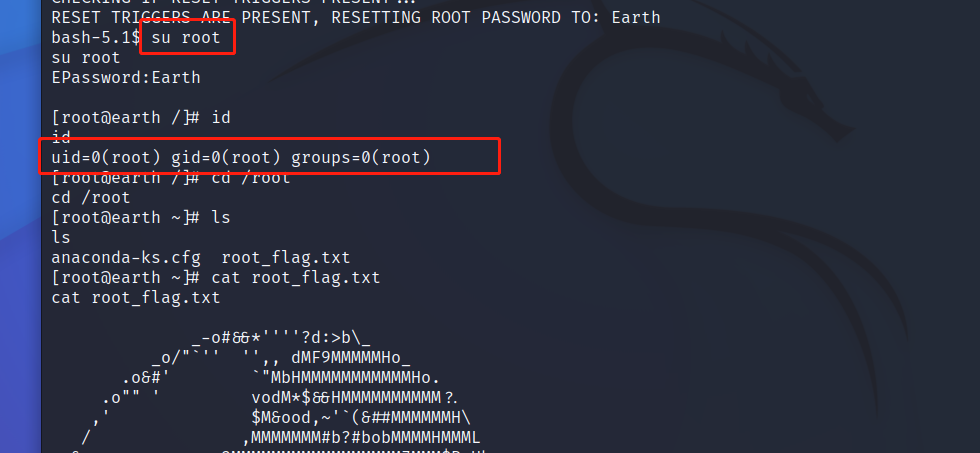Vue3
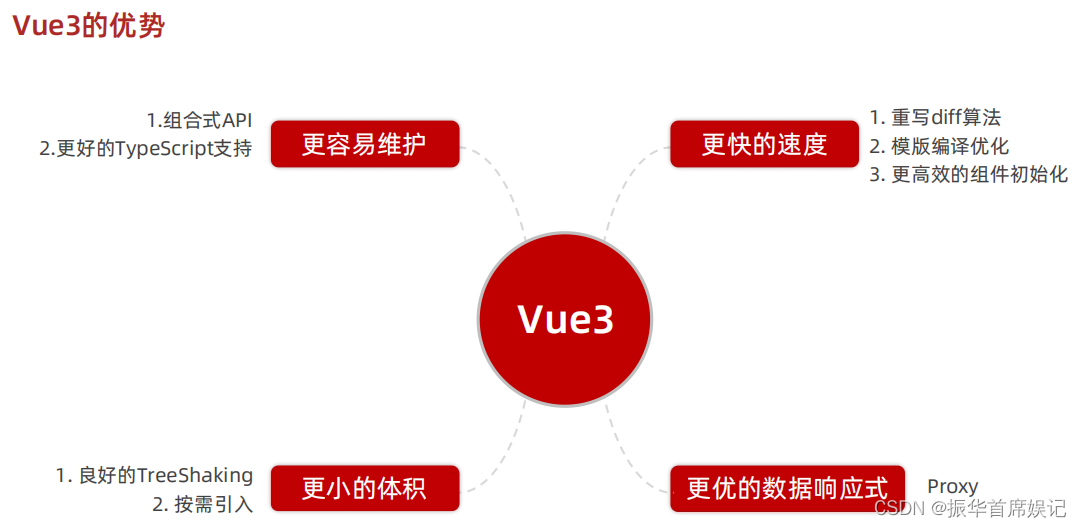
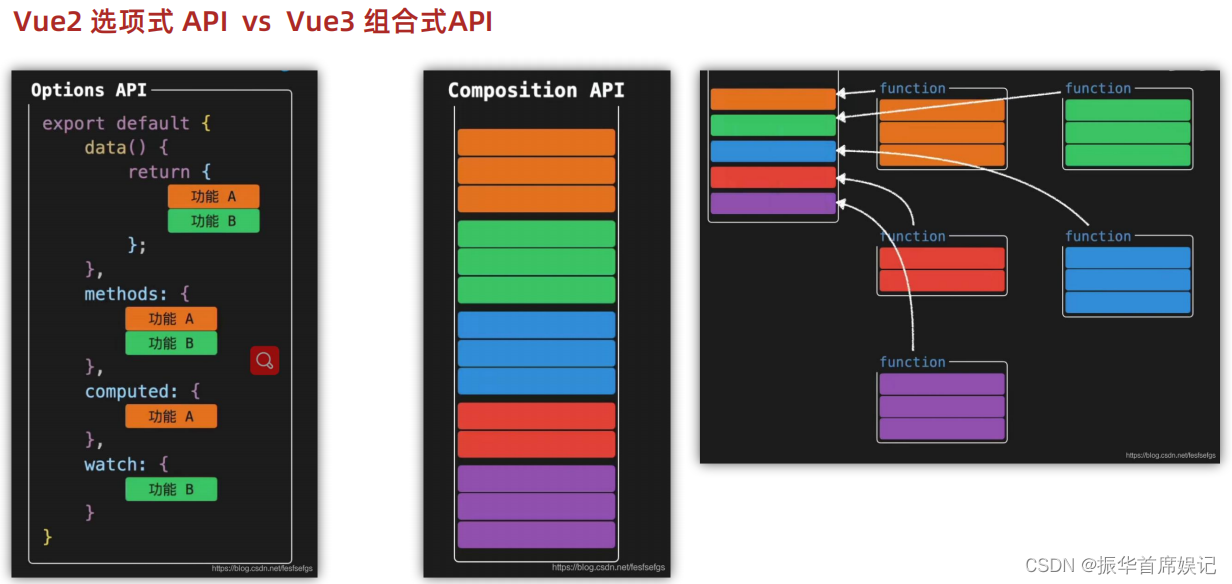
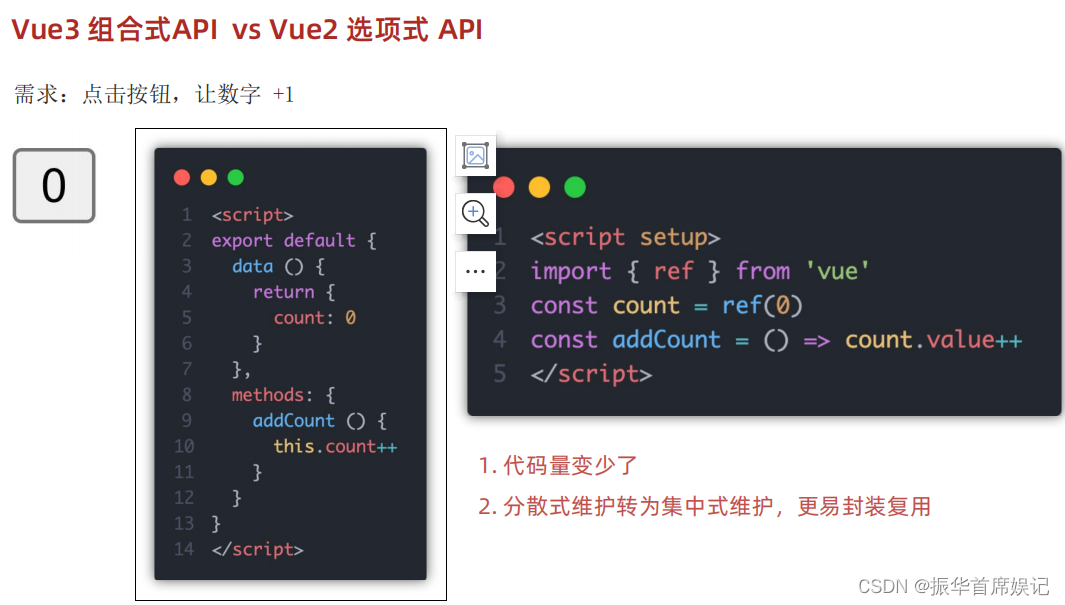
create-vue搭建Vue3项目
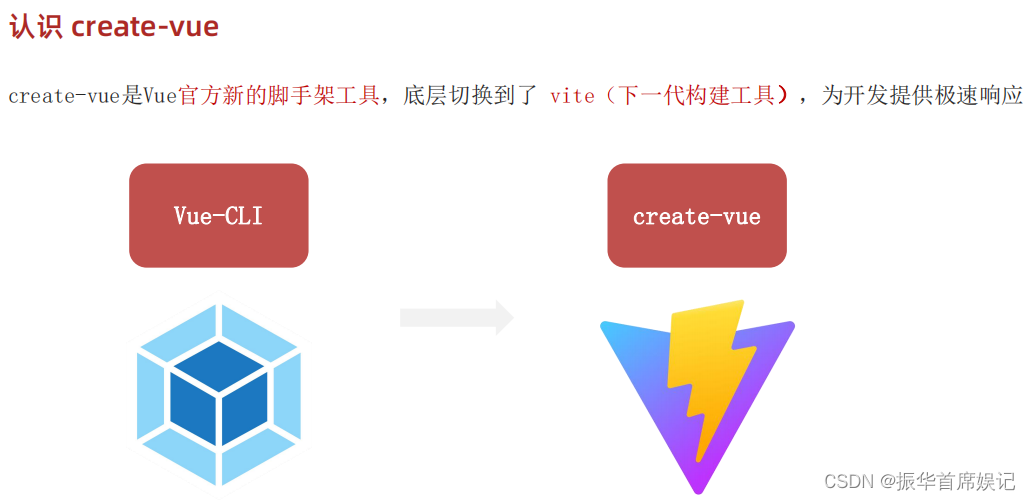
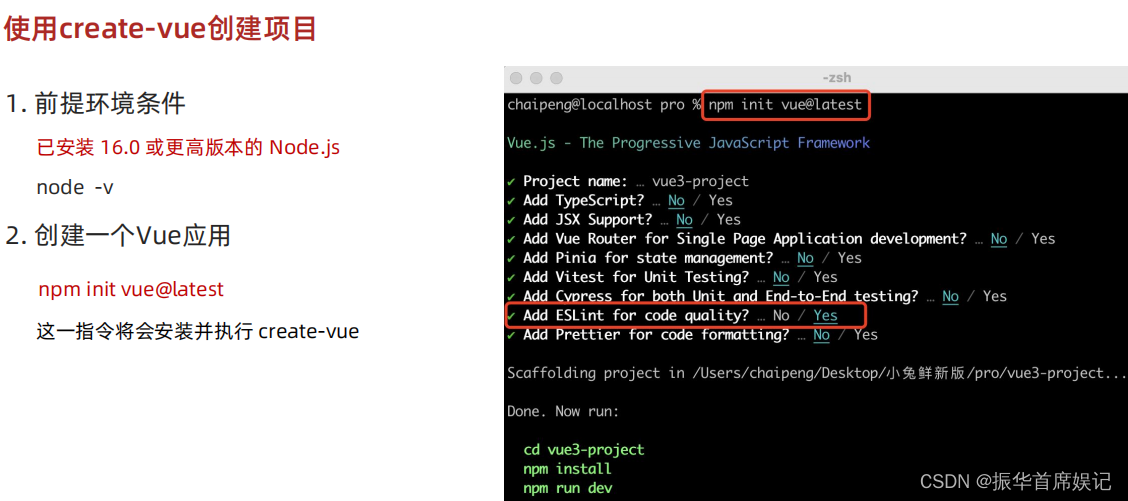
注意要使用nodejs16.0版本以上,windows升级node可以西安使用where node查看本地node位置,然后到官网下载msi文件,在本地路径下安装即可

安装完可以使用node -v检查版本信息

项目目录和关键文件
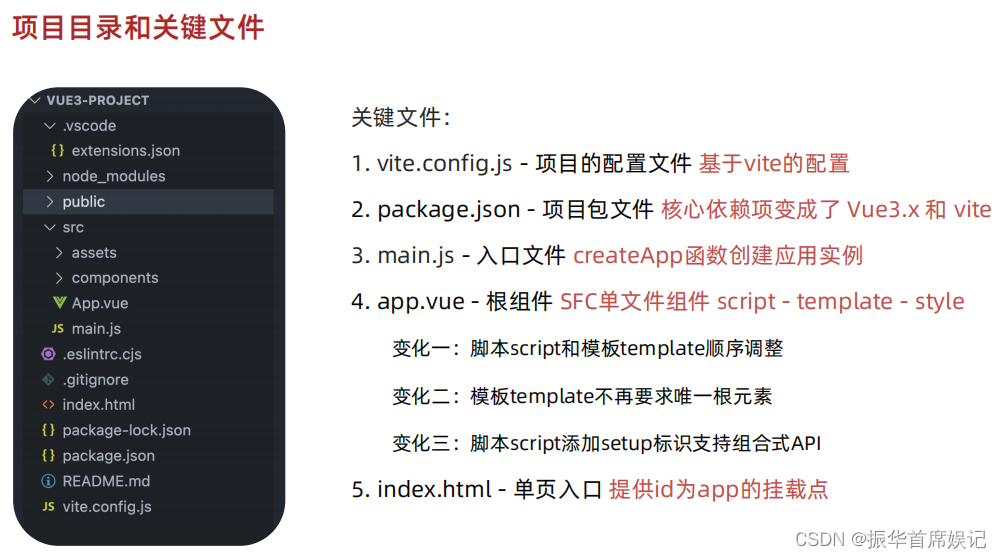
组合式API - setup选项
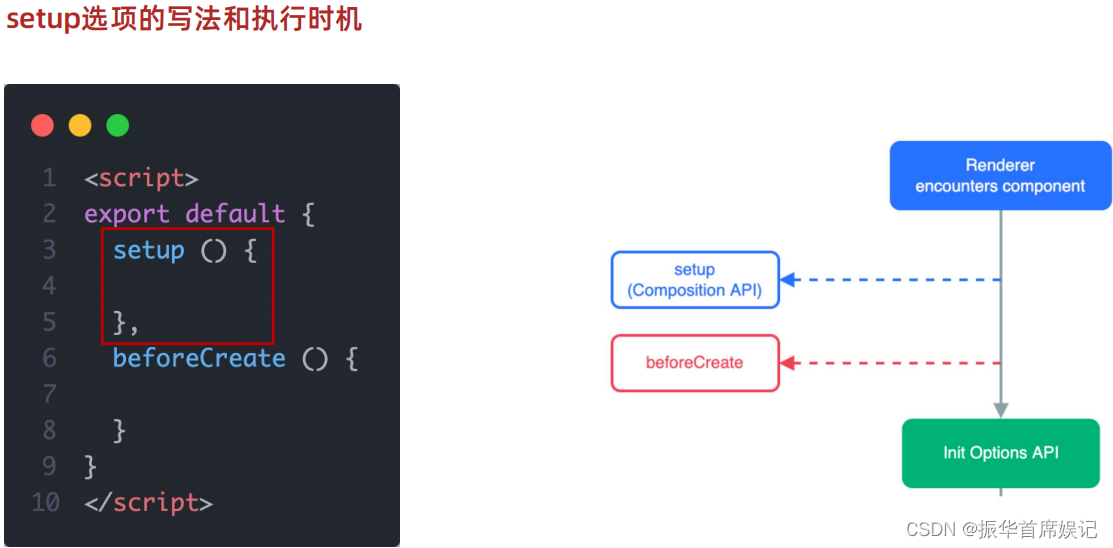
<script>
// setup函数
// 1. 执行时机:比beforeCreate还要早
// 2. setup函数中,获取不到this(this是undefined)
export default{
setup(){
// console.log('setup函数',this);
},
beforeCreate(){
console.log('beforeCreate函数');
}
}
</script>
<template>
<div>学习Vue3</div>
</template>
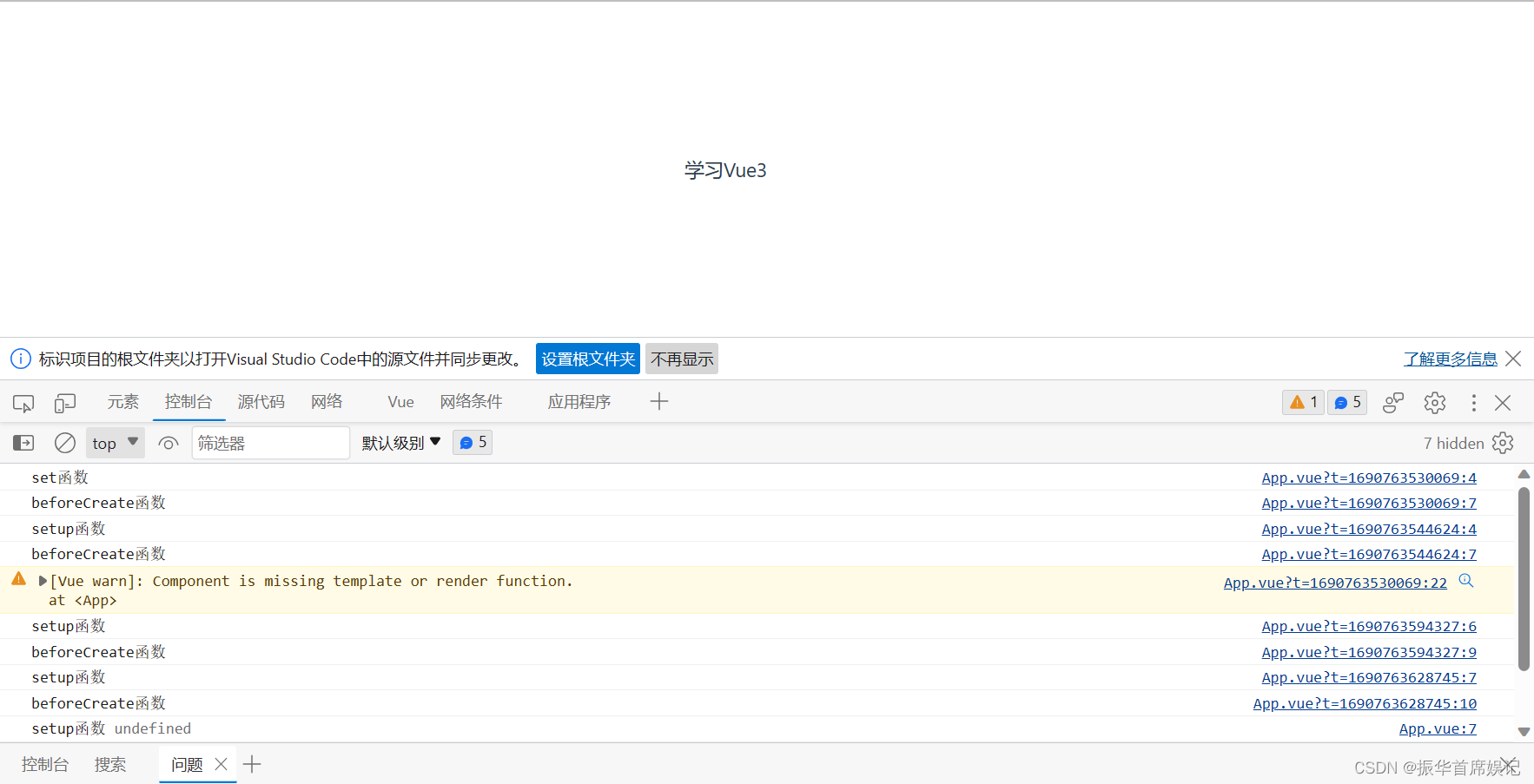

<script>
// setup函数
// 1. 执行时机:比beforeCreate还要早
// 2. setup函数中,获取不到this(this是undefined)
// 3. 数据和函数,需要在setup最后return才能在模板中应用
export default{
setup(){
// console.log('setup函数',this);
// 数据
const message = 'hello Vue3'
// 函数
const logMessage = () => {
console.log(message)
}
return {
message,
logMessage
}
},
beforeCreate(){
console.log('beforeCreate函数');
}
}
</script>
<template>
<div>{{ message }}</div>
<button @click="logMessage">按钮</button>
</template>
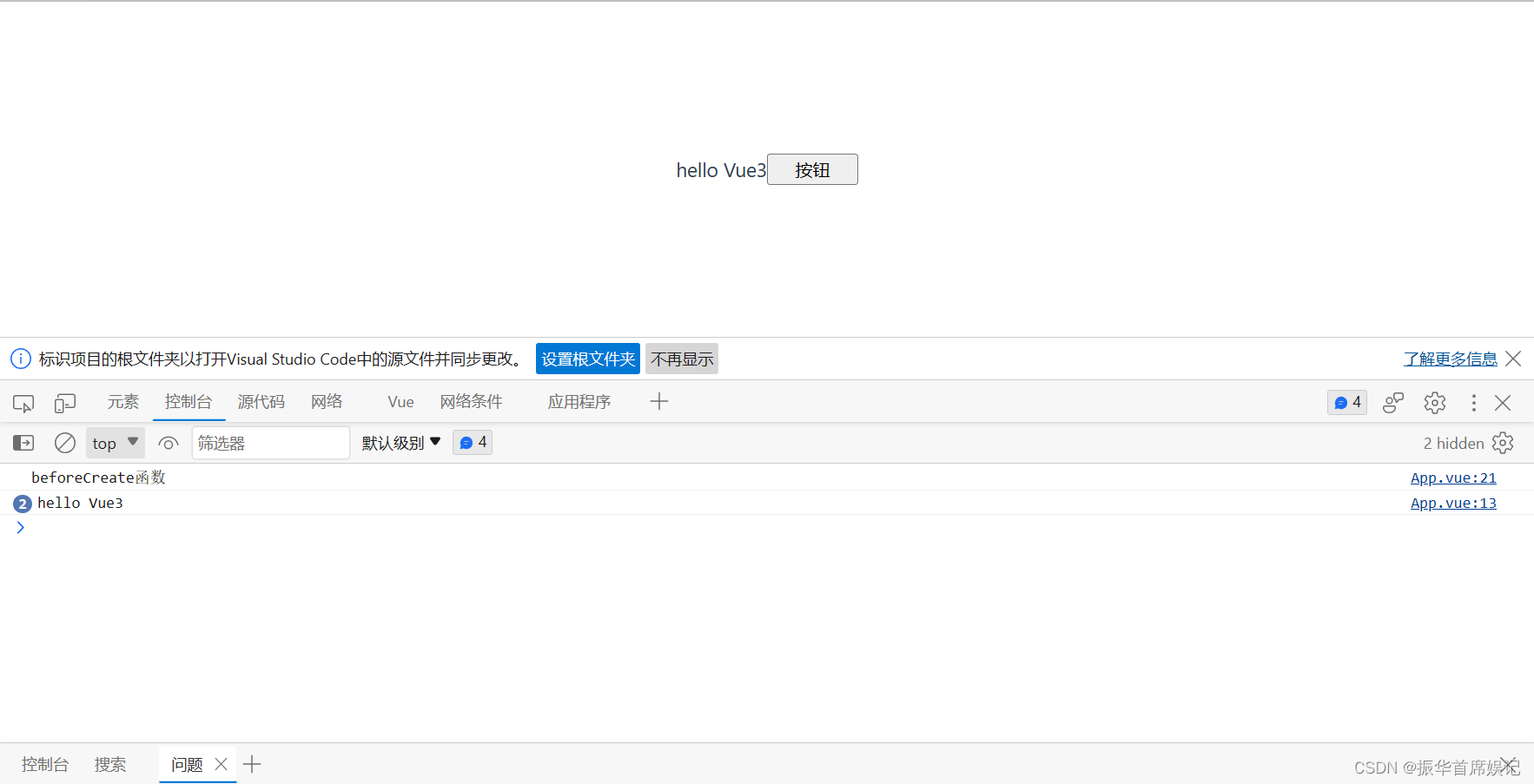
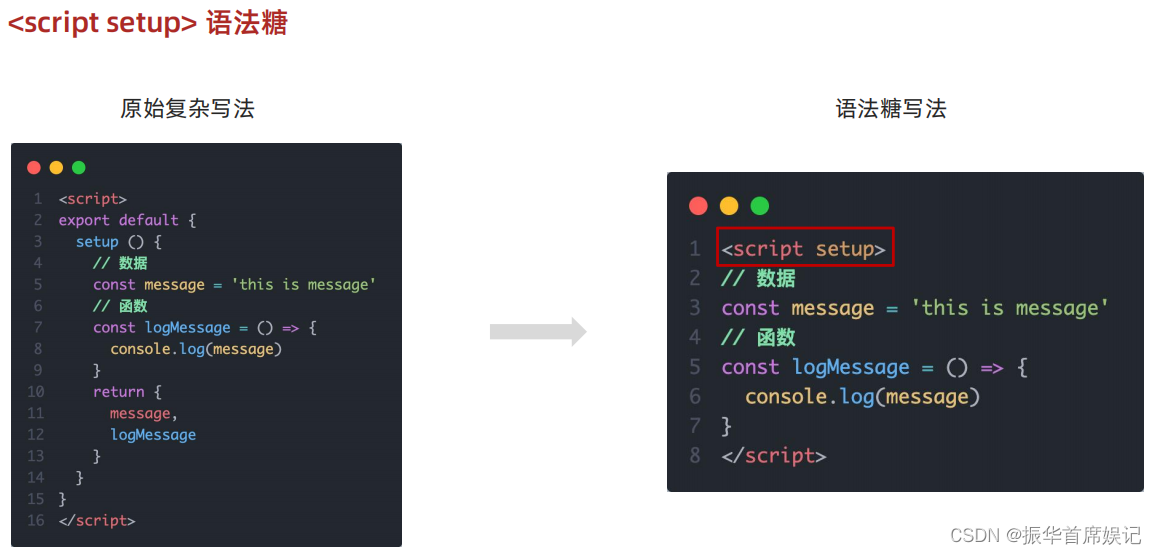
<!-- <script>
// setup函数
// 1. 执行时机:比beforeCreate还要早
// 2. setup函数中,获取不到this(this是undefined)
// 3. 数据和函数,需要在setup最后return才能在模板中应用
export default{
setup(){
// console.log('setup函数',this);
// 数据
const message = 'hello Vue3'
// 函数
const logMessage = () => {
console.log(message)
}
return {
message,
logMessage
}
},
beforeCreate(){
console.log('beforeCreate函数');
}
}
</script> -->
<script setup>
const message = 'hello Vue3'
const logMessage=()=>{
console.log(message)
}
</script>
<template>
<div>{{ message }}</div>
<button @click="logMessage">按钮</button>
</template>
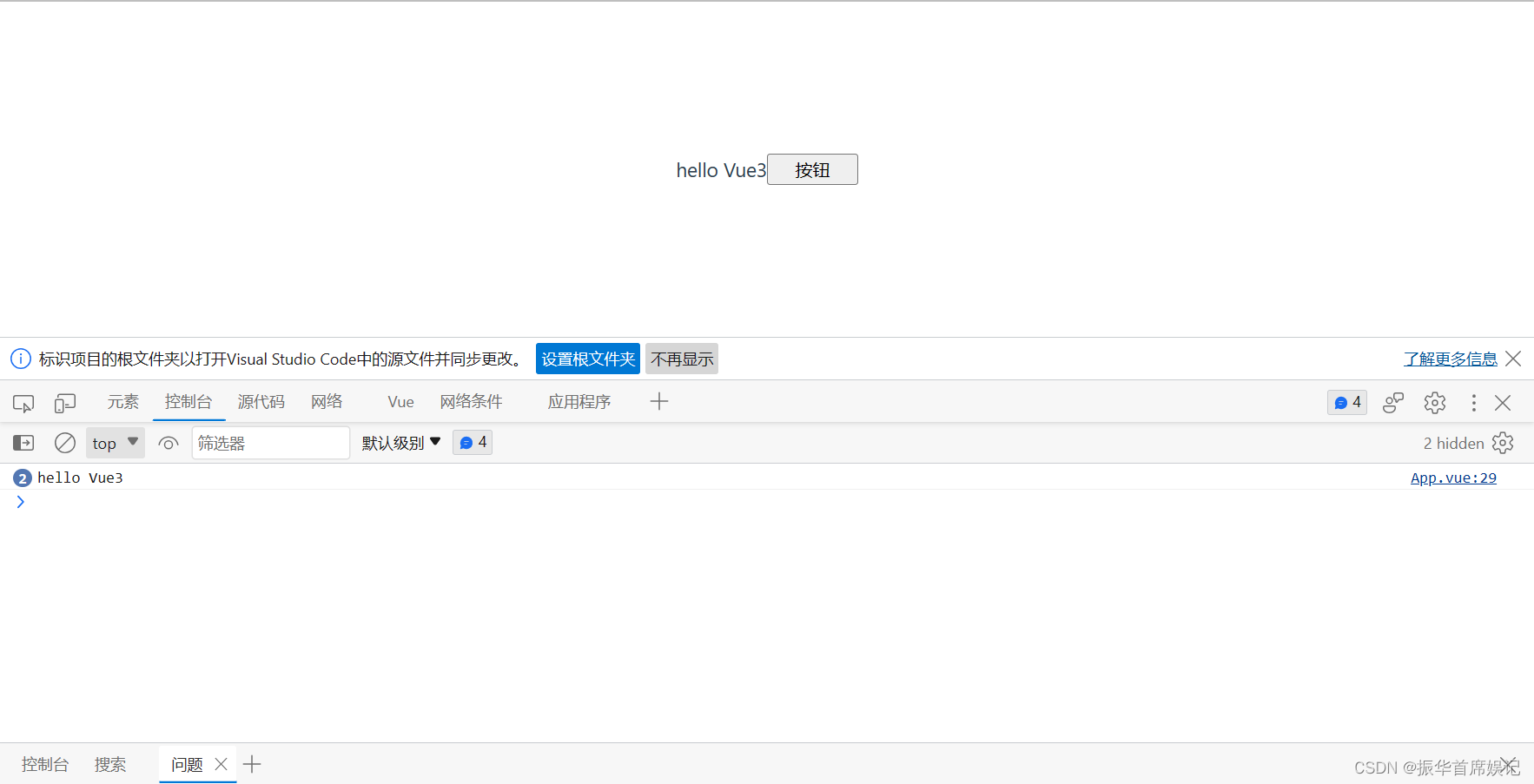
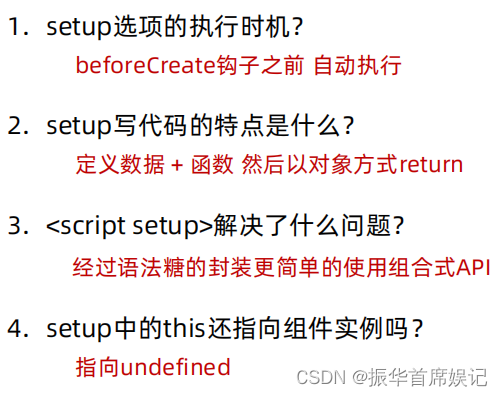
组合式API - reactive和ref函数
reactive()
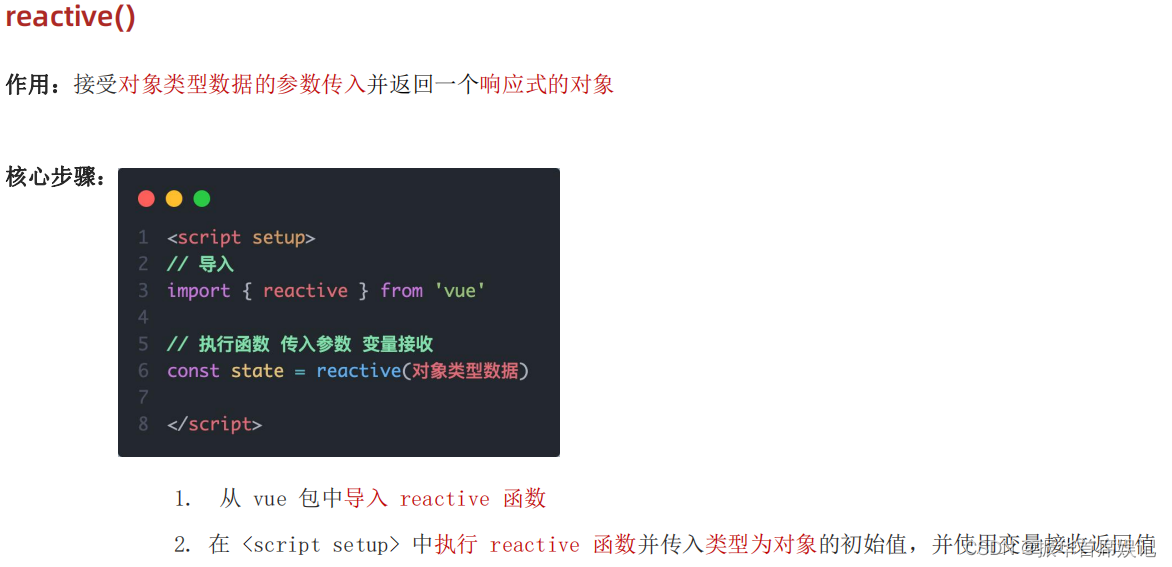
<script setup>
// reactive语法:接受对象类型数据的参数传入,并返回一个响应式的对象
import { reactive } from 'vue';
const state = reactive({
count:100
})
const setCount=()=>{
state.count++
}
</script>
<template>
<div>
<div>{{ state.count }}</div>
<button @click="setCount">+1</button>
</div>
</template>

ref()
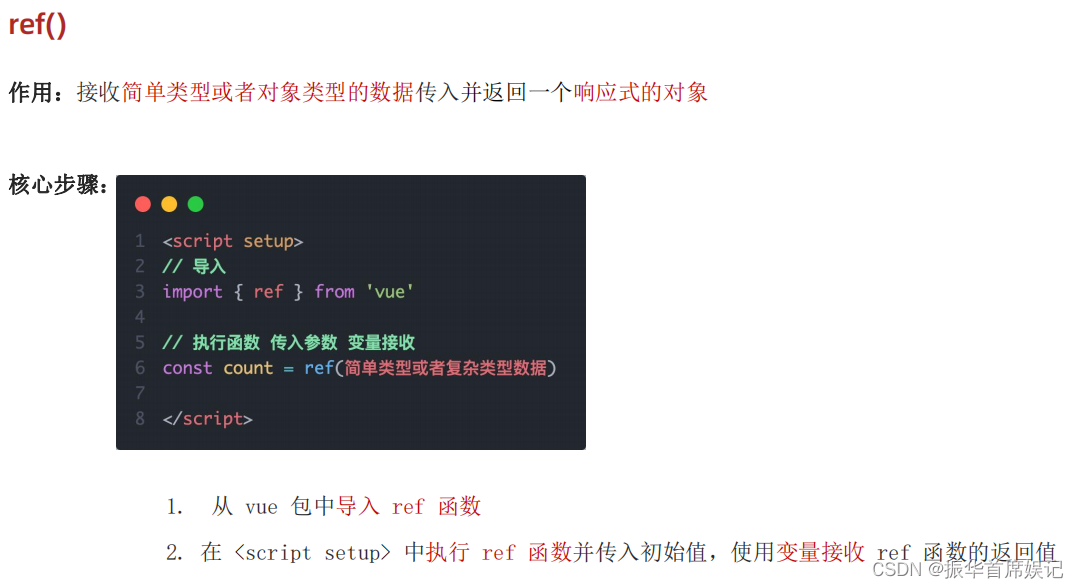
<script setup>
// reactive语法:接受对象类型数据的参数传入,并返回一个响应式的对象
// import { reactive } from 'vue';
// const state = reactive({
// count:100
// })
// const setCount=()=>{
// state.count++
// }
// 如果是简单类型,怎么办?
// 脚本中访问数据,需要通过value
// 在template中,.value不需要加
import { ref } from 'vue'
const count = ref(0)
const setCount=()=>{
count.value++
}
</script>
<template>
<div>
<div>{{ count }}</div>
<button @click="setCount">+1</button>
</div>
</template>

日后编码统一使用ref()
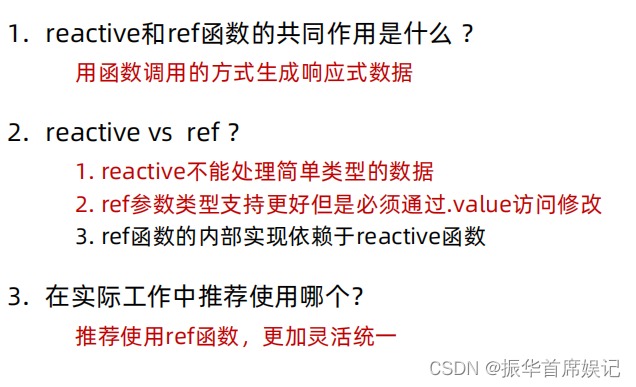
组合式API - computed
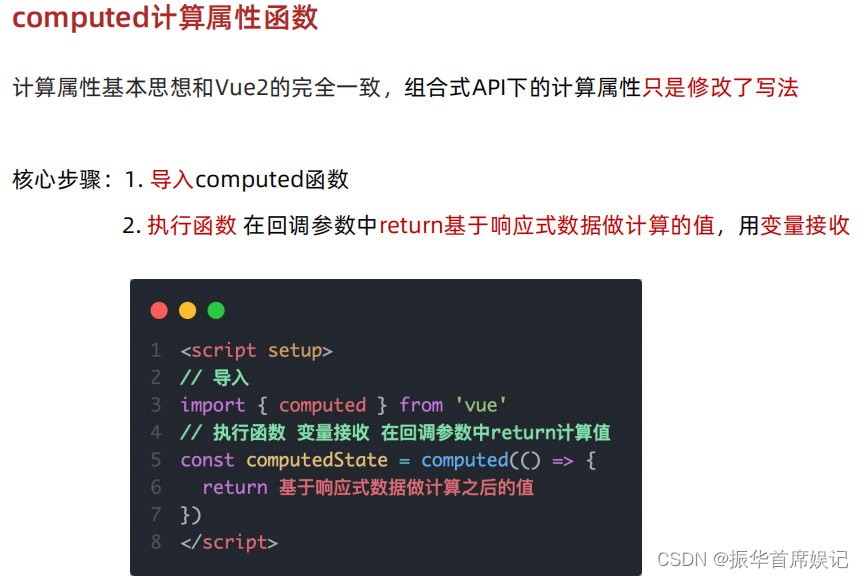
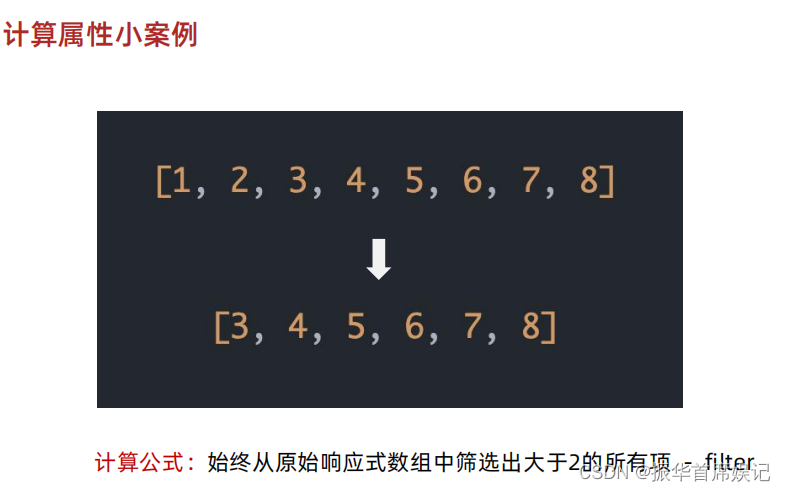
<script setup>
// const 计算属性 = computed(() => {return计算返回的结果})
import { computed, ref } from "vue";
// 声明数据
const list = ref([1, 2, 3, 4, 5, 6, 7, 8]);
// 基于list派生一个计算属性,从list中过滤出大于2
const computedList = computed(() => {
return list.value.filter((item) => item > 2);
});
// 定义一个修改数组的方法
const addFn=()=>{
list.value.push(666)
}
</script>
<template>
<div>原始数据:{{ list }}</div>
<div>计算后的数据:{{ computedList }}</div>
<button @click="addFn" type="button">修改</button>
</template>

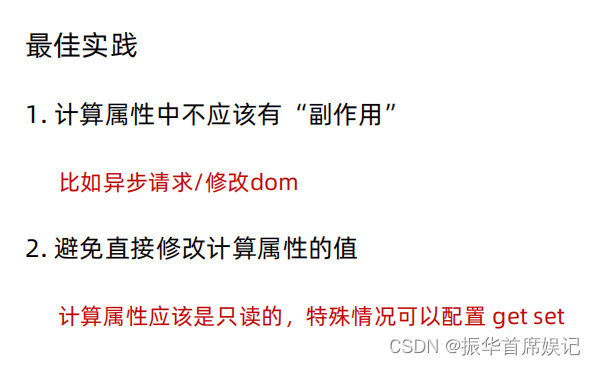
组合式API - watch

基础使用 - 侦听单个数据
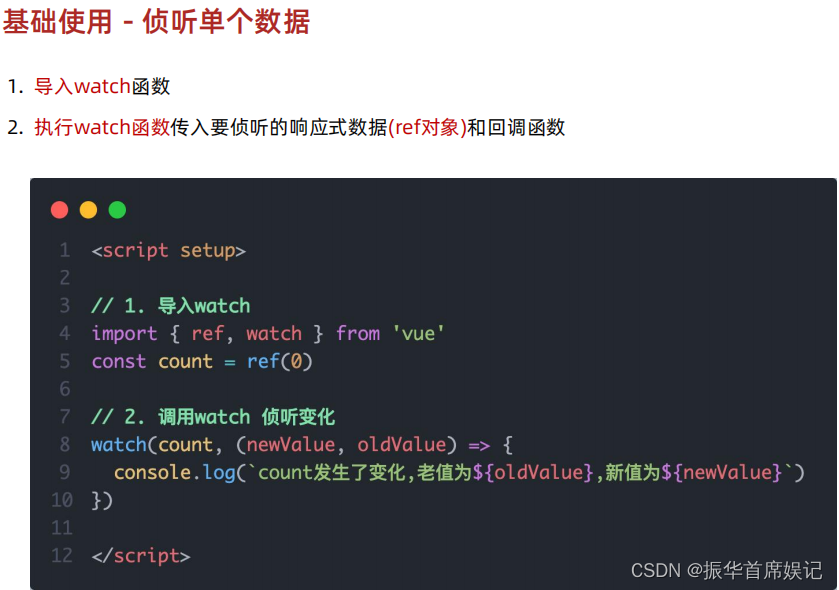
基础使用 - 侦听多个数据
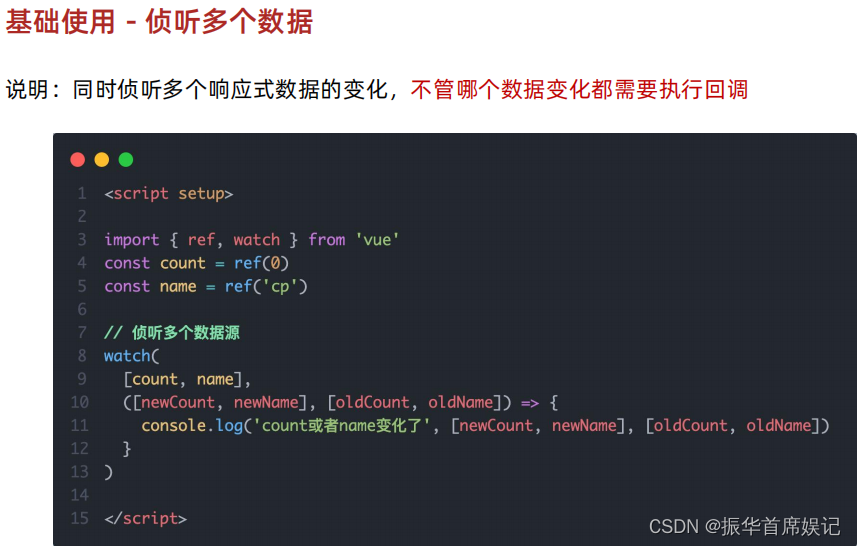
<script setup>
import {ref,watch} from 'vue'
const count = ref(0)
const nickname = ref('张三')
const changeCount=()=>{
count.value++
}
const changeName=()=>{
nickname.value = '里四'
}
// 1.监视单个数据的变化
// watch(ref对象,(newValue,oldValue)=>{...})
watch(count,(newValue,oldValue)=>{
console.log(newValue,oldValue)
})
// 2.监视多个数据的变化
// watch([ref对象1,ref对象2],(newArr,oldArr)=>{...})
watch([count,nickname],(newArr,oldArr)=>{
console.log(newArr,oldArr)
})
</script>
<template>
<div>{{ count }}</div>
<button @click="changeCount">改数字</button>
<div>{{ nickname }}</div>
<button @click="changeName">改昵称</button>
</template>
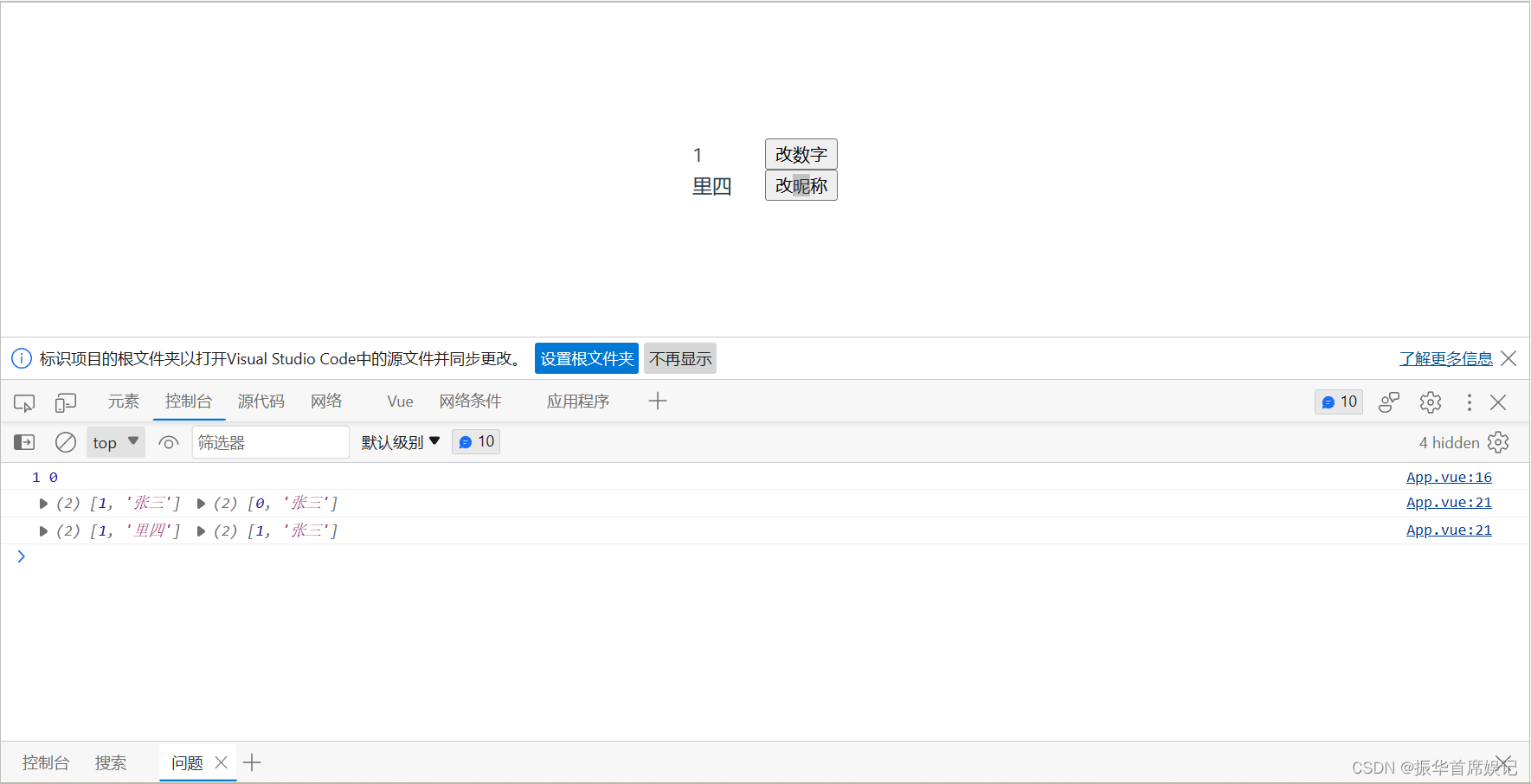
immediate
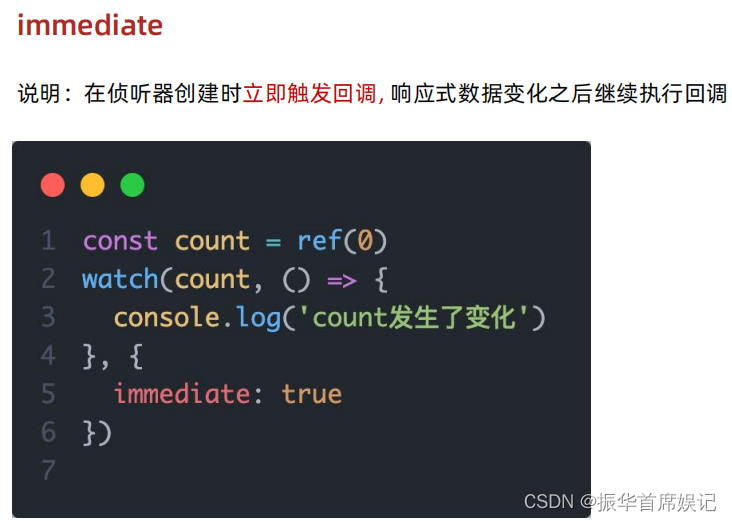
deep
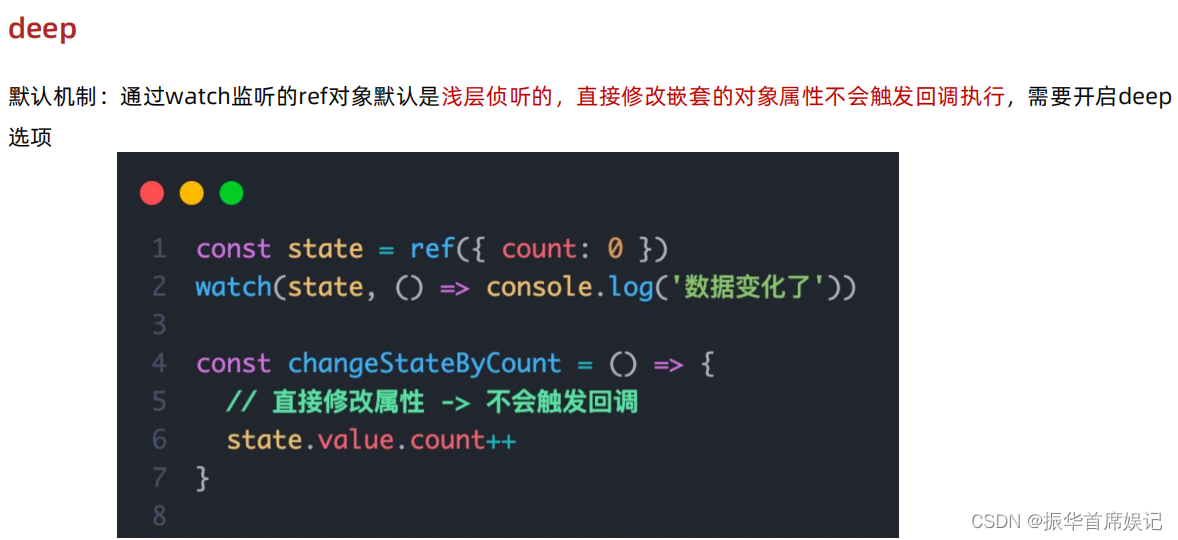
<script setup>
import {ref,watch} from 'vue'
const count = ref(0)
const nickname = ref('张三')
const changeCount=()=>{
count.value++
}
const changeName=()=>{
nickname.value = '里四'
}
// 1.监视单个数据的变化
// watch(ref对象,(newValue,oldValue)=>{...})
// watch(count,(newValue,oldValue)=>{
// console.log(newValue,oldValue)
// })
// 2.监视多个数据的变化
// watch([ref对象1,ref对象2],(newArr,oldArr)=>{...})
// watch([count,nickname],(newArr,oldArr)=>{
// console.log(newArr,oldArr)
// })
// 3.immediate立即执行
// watch(count,(newValue,oldValue)=>{
// console.log(newValue,oldValue)
// },{
// immediate:true
// })
// 4.deep深度监视:默认watch进行的是浅层监视
const useInfo = ref({
name:'张三',
age:18
})
const setUserInfo=()=>{
// 修改了useInfo.value 修改了对象的地址,才能监视到
// useInfo.value = {name : 'ls',age:50}
useInfo.value.age++
}
watch(useInfo,(newValue)=>{
console.log(newValue)
},{
deep:true
})
</script>
<template>
<div>{{ count }}</div>
<button @click="changeCount">改数字</button>
<div>{{ nickname }}</div>
<button @click="changeName">改昵称</button>
<div>{{ useInfo }}</div>
<button @click="setUserInfo">修改userInfo</button>
</template>

精确侦听对象的某个属性
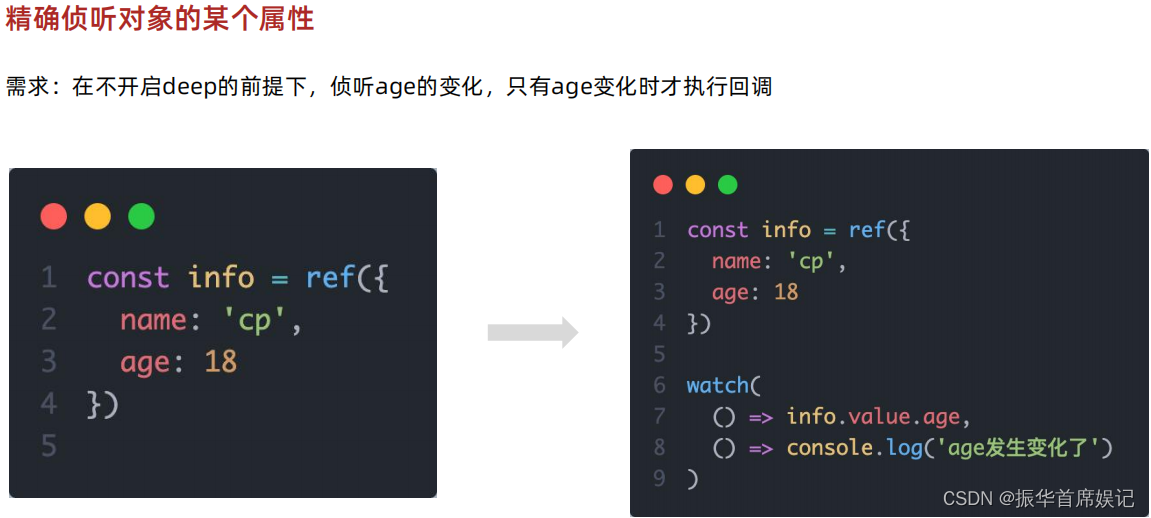
<script setup>
import {ref,watch} from 'vue'
const count = ref(0)
const nickname = ref('张三')
const changeCount=()=>{
count.value++
}
const changeName=()=>{
nickname.value = '里四'
}
// 1.监视单个数据的变化
// watch(ref对象,(newValue,oldValue)=>{...})
// watch(count,(newValue,oldValue)=>{
// console.log(newValue,oldValue)
// })
// 2.监视多个数据的变化
// watch([ref对象1,ref对象2],(newArr,oldArr)=>{...})
// watch([count,nickname],(newArr,oldArr)=>{
// console.log(newArr,oldArr)
// })
// 3.immediate立即执行
// watch(count,(newValue,oldValue)=>{
// console.log(newValue,oldValue)
// },{
// immediate:true
// })
// 4.deep深度监视:默认watch进行的是浅层监视
const useInfo = ref({
name:'张三',
age:18
})
const setUserInfo=()=>{
// 修改了useInfo.value 修改了对象的地址,才能监视到
// useInfo.value = {name : 'ls',age:50}
useInfo.value.age++
}
// 4. deep深度监视
// watch(useInfo,(newValue)=>{
// console.log(newValue)
// },{
// deep:true
// })
// 5. 对于对象中的属性,进行监视
watch(()=>useInfo.value.age,(newValue,oldValue)=>{
console.log(newValue,oldValue)
})
</script>
<template>
<div>{{ count }}</div>
<button @click="changeCount">改数字</button>
<div>{{ nickname }}</div>
<button @click="changeName">改昵称</button>
<div>{{ useInfo }}</div>
<button @click="setUserInfo">修改userInfo</button>
</template>
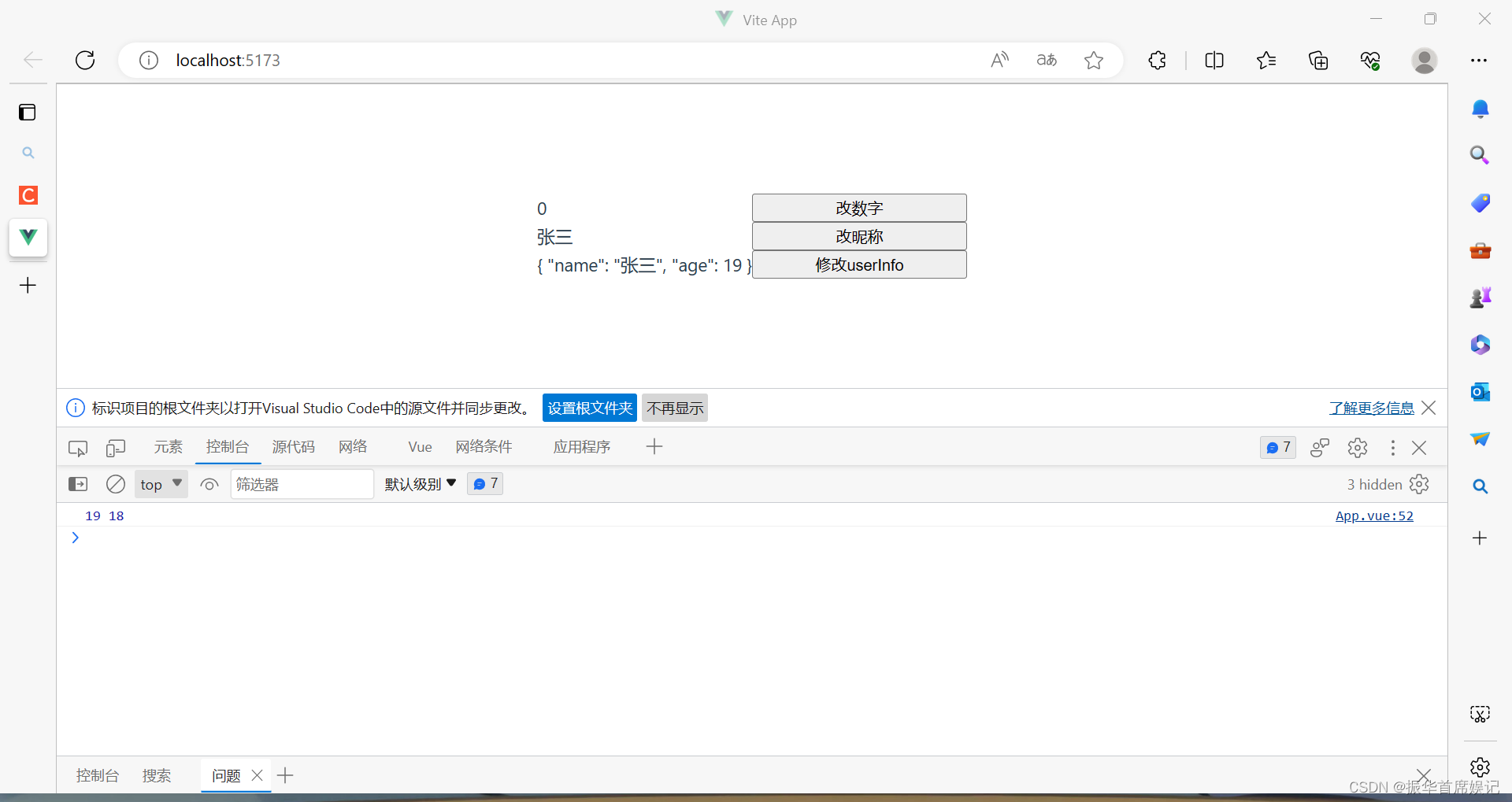
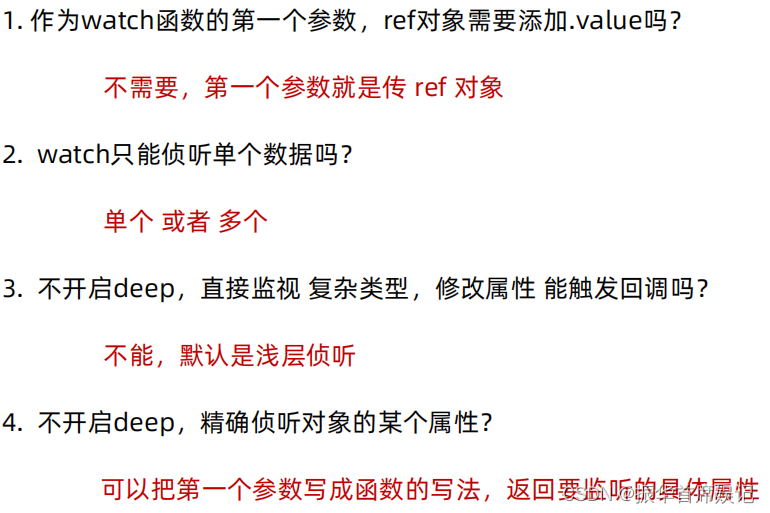
组合式API - 生命周期函数
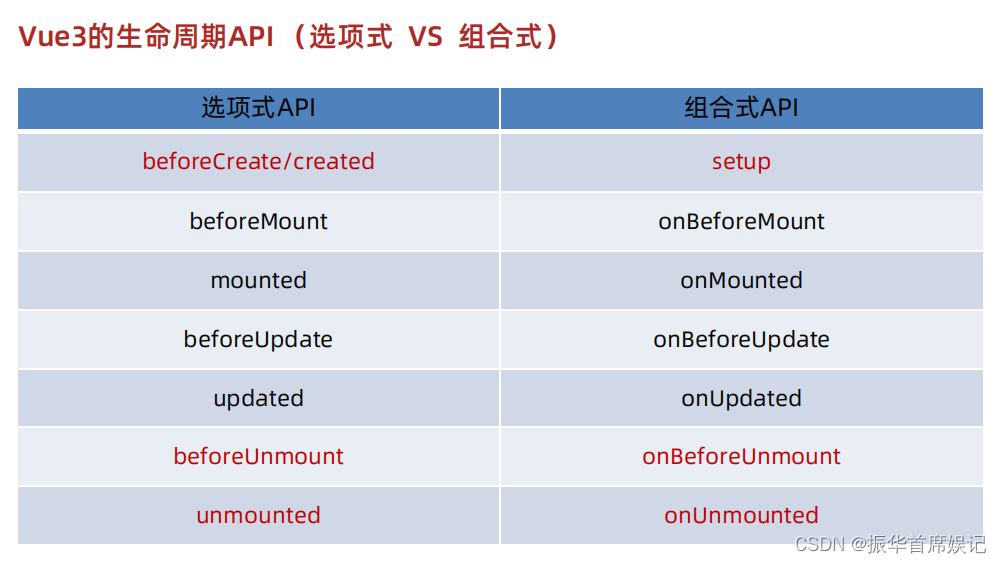
生命周期函数基本使用
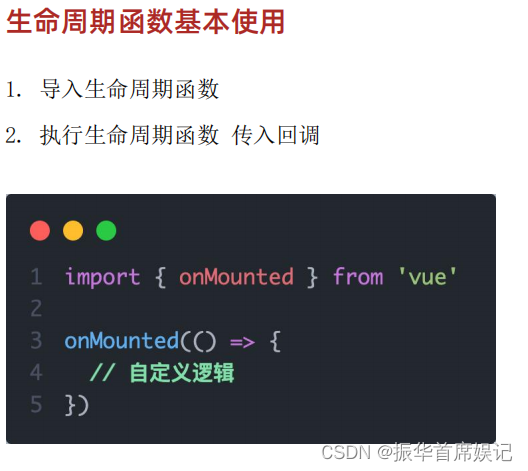
执行多次
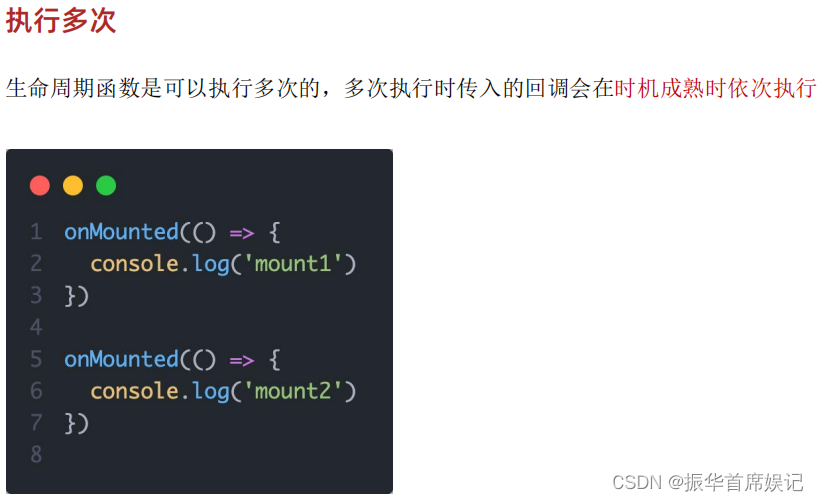
<script setup>
import { onMounted } from 'vue';
// beforeCreated 和 created 的相关代码放在 setup 中执行
const getList = () =>{
setTimeout(()=>{
console.log('发送请求,获取数据')
},2000)
}
// 已进入页面的请求
getList()
// 如果有写代码需要在mounted生命周期中执行
onMounted(()=>{
console.log('mounted生命周期函数')
})
// 可调用多次,不会冲突,按照顺序依次执行
onMounted(()=>{
console.log('mounted生命周期函数1')
})
</script>
<template>
<div></div>
</template>

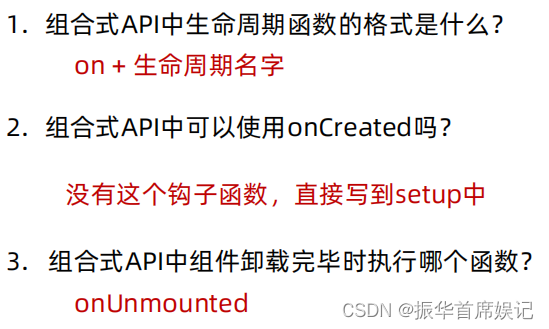
组合式API - 父子通信
组合式API下的父传子
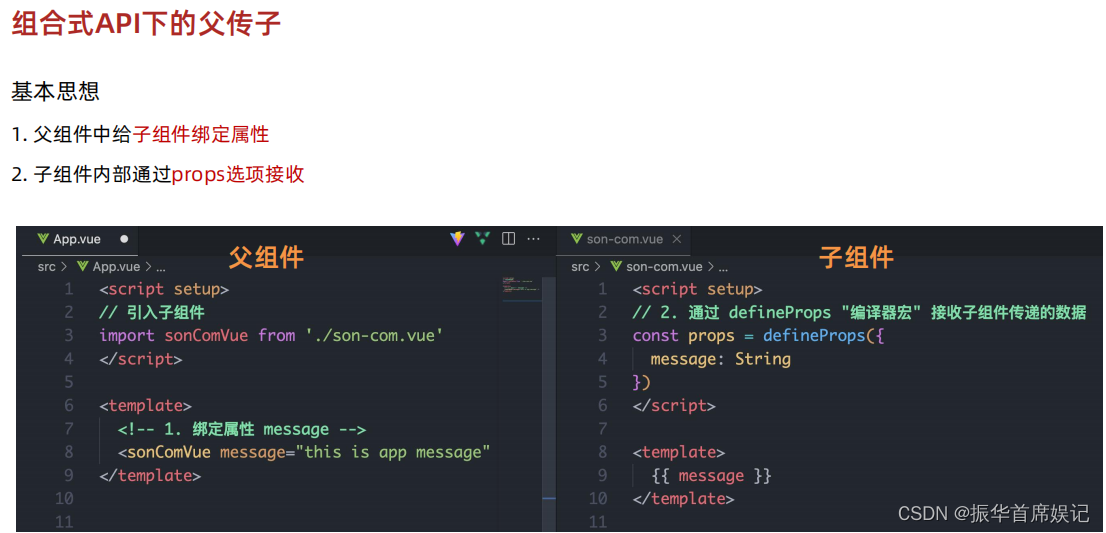
<script setup>
// 注意:由于写了setup,所以无法直接配置props
// 此处要借助于编译器宏函数接收
const props = defineProps({
car:String,
money:Number
})
console.log(props.car)
console.log(props.money)
</script>
<template>
<div class="son">我是子组件 - {{ car }}</div>
</template>
<style scoped>
.son {
border: 1px solid #000;
padding: 30px;
}
</style>
<script setup>
import SonCom from '@/components/son-com.vue'
import {ref} from 'vue'
// 局部组件导入进来就能用
const money = ref(100)
const getMoney = () => {
money.value+=10
}
</script>
<template>
<div>
<h1>
父组件 - {{ money }}
<button @click="getMoney">挣钱</button>
</h1>
<!-- 给子组件,以添加属性的方式传值 -->
<SonCom car="宝马车" :money="money"></SonCom>
</div>
</template>
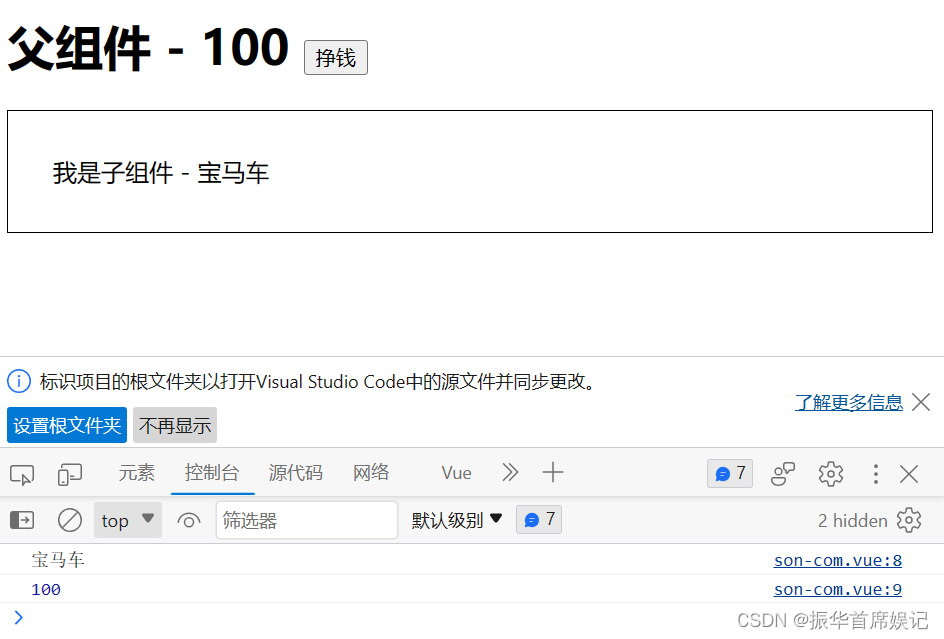
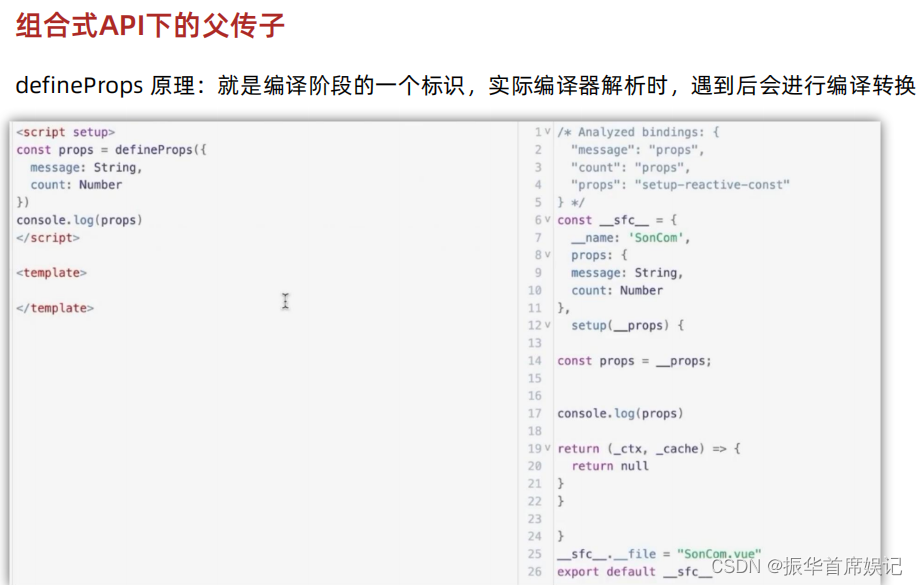
组合式API下的子传父

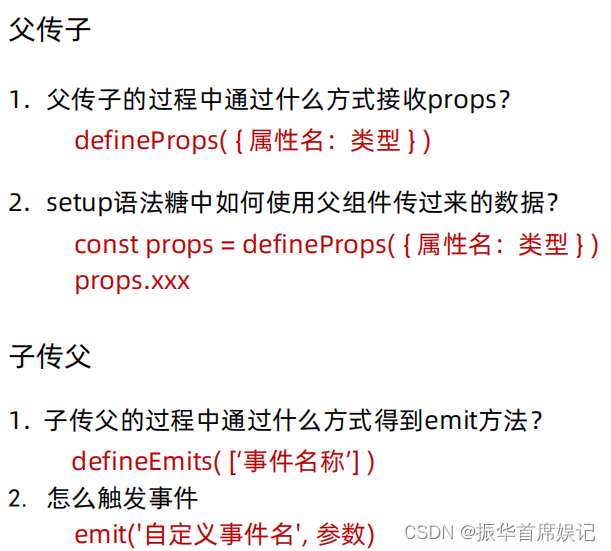
组合式API - 模版引用

如何使用(以获取dom为例 组件同理)
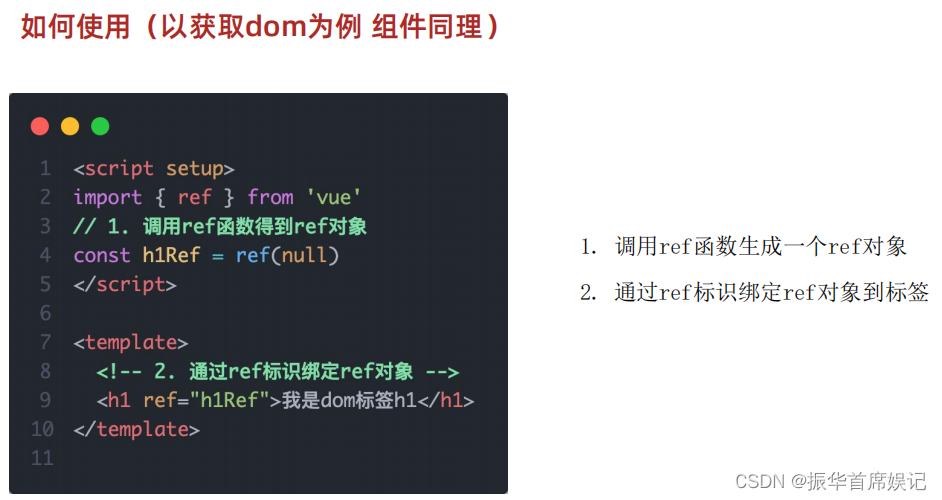
defineExpose()
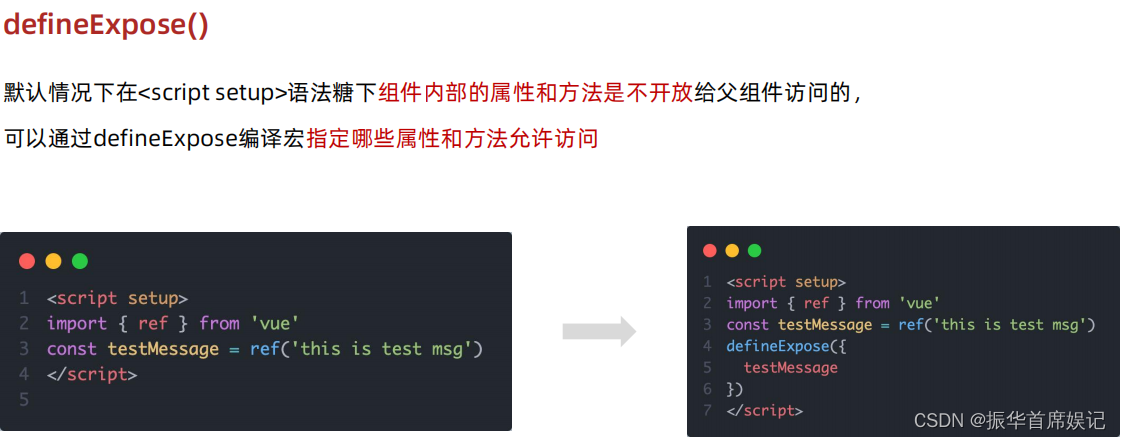
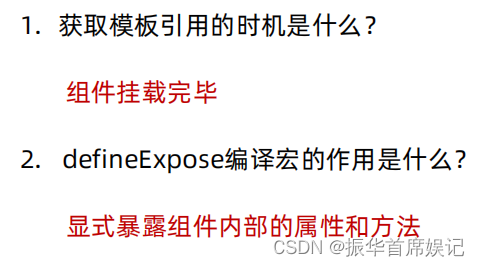
组合式API - provide和inject

跨层传递普通数据
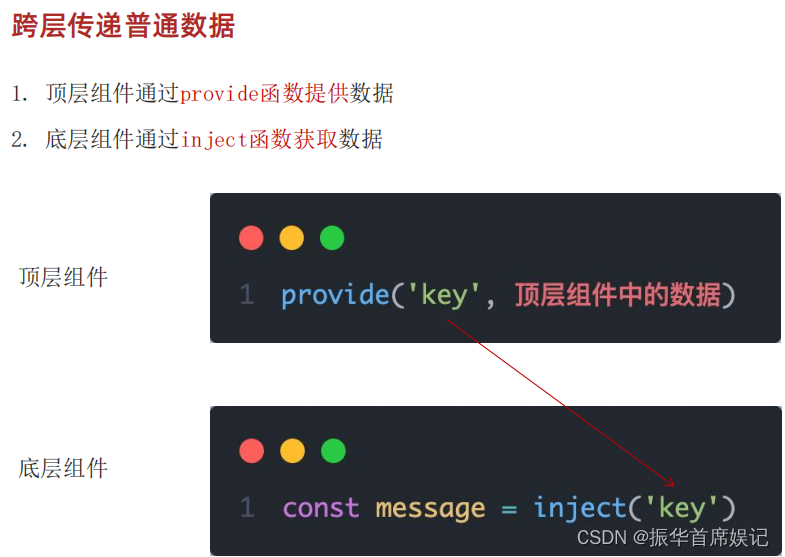
跨层传递响应式数据

跨层传递方法
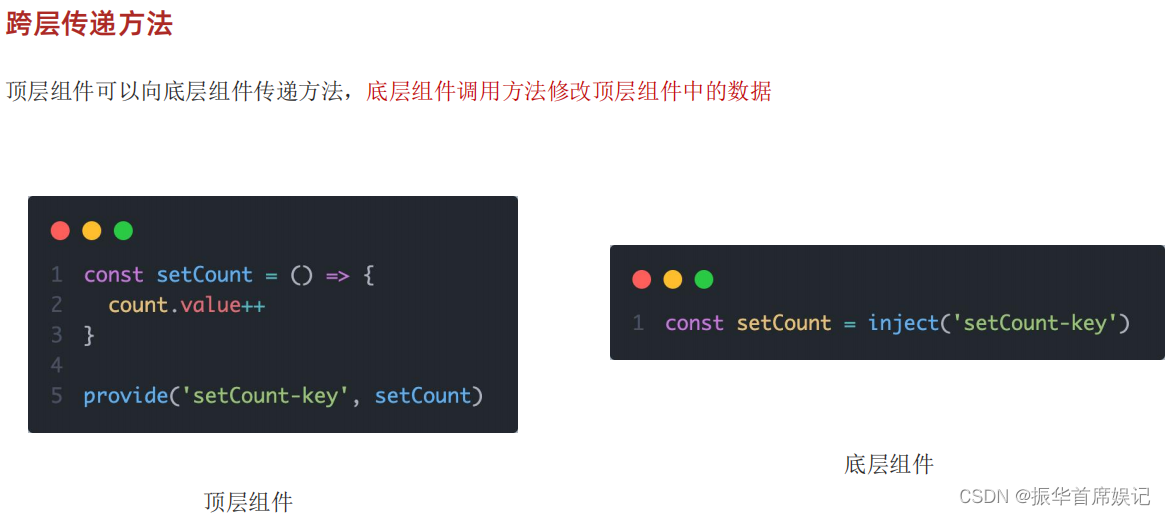
<script setup>
import CenterCom from "@/components/center-com.vue";
import { provide, ref } from "vue";
// 1.跨层传递普通数据
provide("theme-color", "pink");
// 2.跨层传递响应式数据
const count = ref(100);
provide("count", count);
setTimeout(() => {
count.value = 500;
}, 2000);
// 3.跨层级传递函数,给子孙后代传递可以修改数据的方法
provide("changeCount", (newCount) => {
count.value = newCount;
});
</script>
<template>
<div>
<h1>顶层组件</h1>
<CenterCom></CenterCom>
</div>
</template>
<script setup>
import BottomCom from './bottom-com.vue'
</script>
<template>
<div>
<h2>中间组件</h2>
<BottomCom></BottomCom>
</div>
</template>
<script setup>
import {inject} from 'vue'
const themeColor = inject('theme-color')
const count = inject('count')
const changeCount = inject('changeCount')
const clickFn=()=>{
changeCount(1000)
}
</script>
<template>
<div>
<h3>底层组件 - {{ themeColor }} - {{ count }}</h3>
<button @click="clickFn">更新count</button>
</div>
</template>

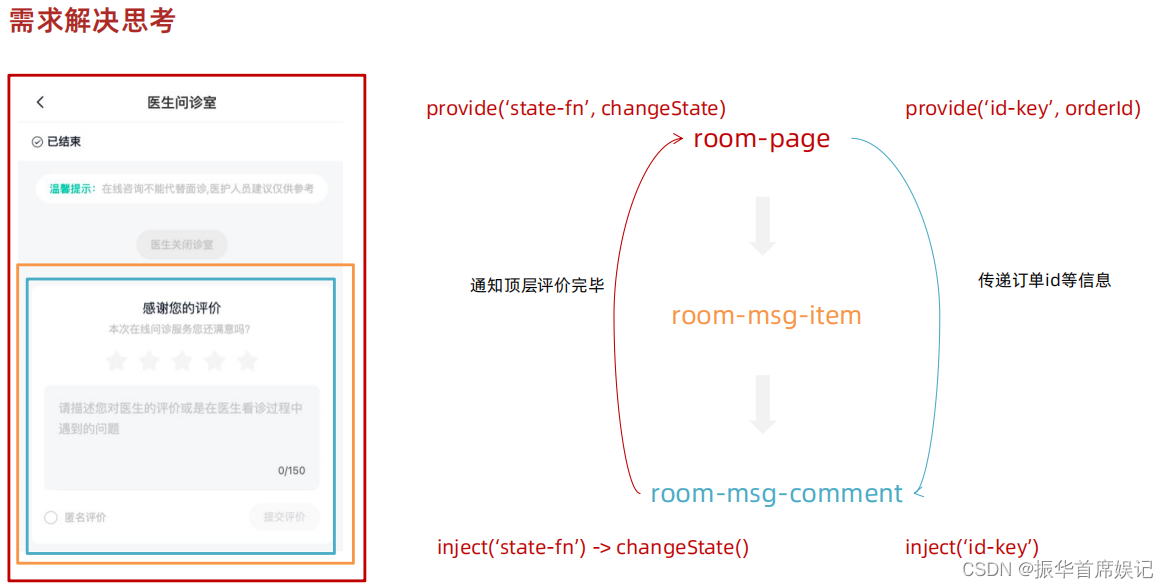
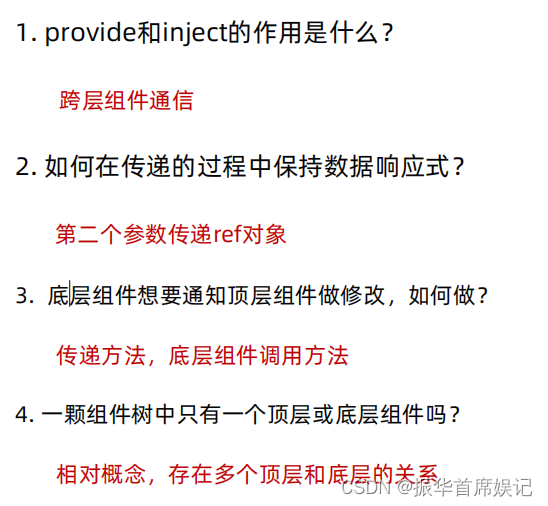
Vue3.3新特性-defineOptions

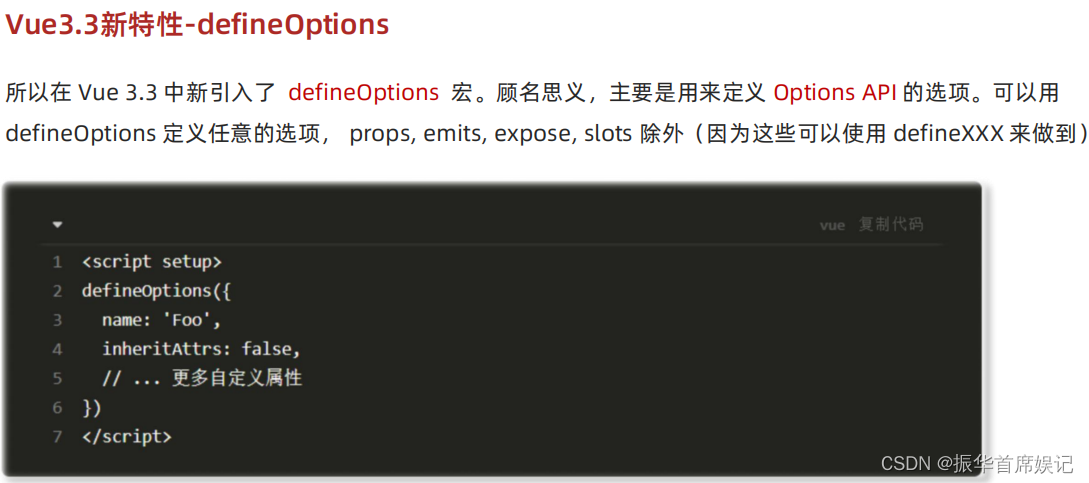
Vue3.3新特性-defineModel
